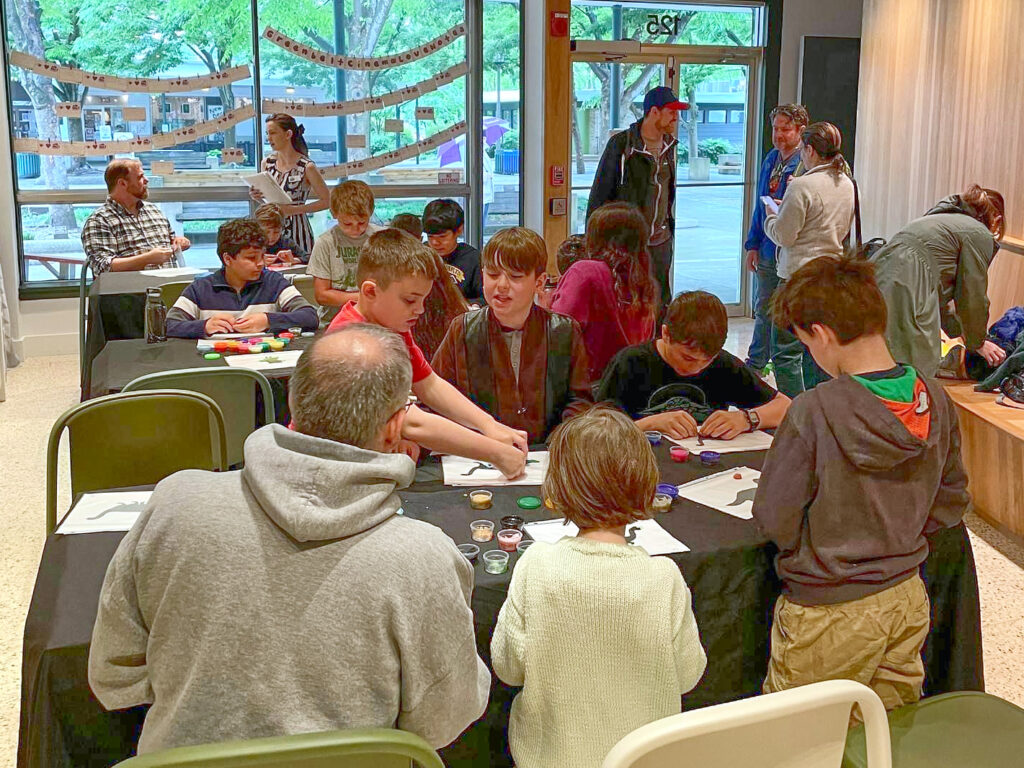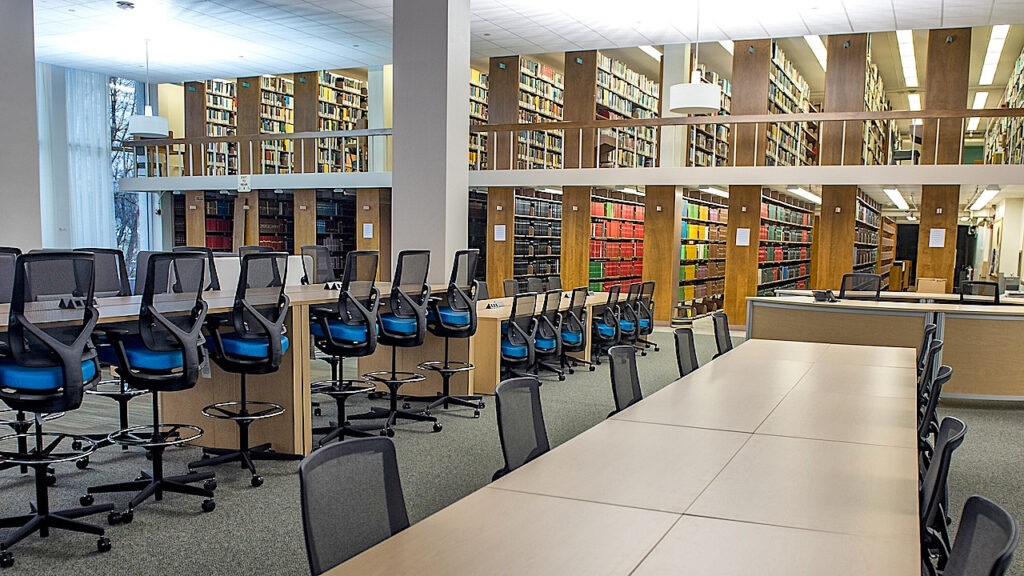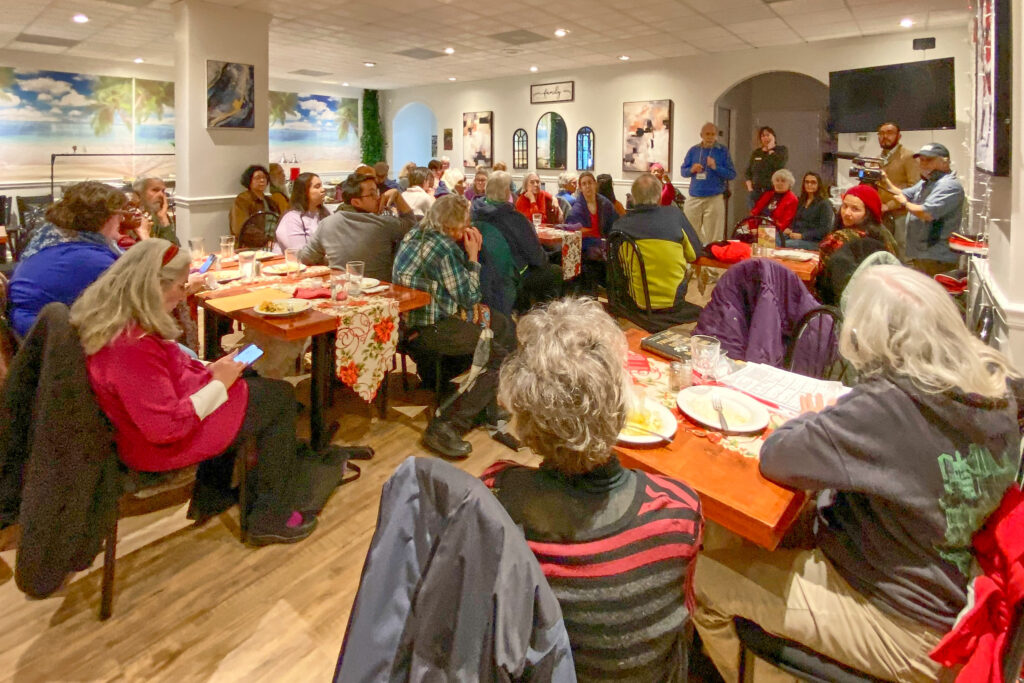Mayor Emmett Jordan welcomed Greenbelt Cinema Director Caitlin McGrath and Board Chair Cathy Jones to a worksession discussion of the Greenbelt Cinema’s Fiscal Year 2025 budget. McGrath noted that they were now in the 10th year of operation since the city awarded the nonprofit group stewardship of the Old Greenbelt Theatre, recently rebranded as Greenbelt Cinema.
Boost Requested
The Cinema is requesting a significant increase in the subsidy from the city, which has been, for several years and projected for FY 2025, $50,000. The Cinema now requests $150,000. McGrath said the larger amount was not one she expected would be needed going forward, but was a boost now to support building back to a more sustainable level that would enable smaller requests in future years.
After about 30 minutes of history, background and iteration of the many positive impacts that the Cinema has had for the city, new Councilmember Amy Knesel asked the $100,000 question: What can the Cinema not do if your budget from the city is not increased as requested?
Impact on Staffing
McGrath said their biggest expense was salaries and that without the boost, reduced staffing would impact what the theater would be able to do. She contrasted staffing now with that of Paul Sanchez, the last to operate the facility as a traditional movie theater. He operated the theater with a skeleton staff – but also just showed movies and did little else to otherwise enhance life in the city.
The Cinema now has five full-time employees and several part-timers. McGrath found it “hard to imagine” how fewer people would be able to deliver the same level of service. Jones pointed out that at the current budget level, they would certainly not be able to replace the recently departed marketing person crucial to financial stability and would expect a longer climb to a sustainable level as a result.
Funding Sources
McGrath noted that nonprofits can, and the theater does, raise additional funds (while making the point that if the Cinema were for profit, Covid would have closed it permanently). It is still operating but at a loss and, as a result, is eroding its reserves. American Rescue Plan Act funding (now ending) has been crucial in keeping them going. She is encouraged that more people are coming back, but it is a slow process and attendance is not yet back to pre-pandemic levels. She said that in comparison with other local cultural resources, like Greenbelt Arts Center and the Greenbelt Museum, the council subsidy for the Cinema, per attending person, was considerably less.
Covid and Audiences
Covid was a brutal experience for the theater. It was closed and even when it reopened, it was very restricted. Overall changes in media usage patterns spurred by the home-based streaming services encouraged by Covid have become the norm and continue to eat into patronage. Over 200 theaters in the U.S. have closed their doors permanently.
During the pandemic the theater creatively adapted, even though it couldn’t host audiences. Coming out of the pandemic has proven an intense climb. Patrons tend to be an older, female and quite Covid-cautious demographic, meaning they are less inclined to be in public spaces – which reduces audience numbers. The Cinema is working to attract a broader clientele with a broader range of content designed to attract a wider audience – for example, young men are the primary customers for action movies – but it is a slow process.
Back to Seven Days
The studios dictate what movies can be shown and the terms under which they are shown. Shortly after the pandemic, when the theater was opening two or three days a week, the studios were grateful for any open movie theaters and were flexible about making movies available. But more recently, the studios again insist that theaters show movies seven days a week. As the Cinema adapted to that reality by opening seven days, their costs went up significantly, but audiences and receipts (though increasing) did not expand immediately, with the same audiences spreading over seven days instead of just two or three.
Second Screen
McGrath described the “micro-theater” as being a strategic asset crucial to art house theaters. The Cinema’s identity as an “art house” theater gives it a wide range of offerings – historic, experimental, shorts, documentaries, for example – compared to the traditional movie theater so movies can be shown that attract specialized, smaller audiences. As the audience wanes for a blockbuster movie for the main screen, but is still coming, the movie can move to the smaller space and allow a new movie in the main auditorium.
McGrath felt that perhaps not everybody knew that the micro-theater has been fully renovated to have comfortable chairs and equivalent sound and projection facilities – a far cry from the original, very basic interim pop-up. This smaller space also extends the range of offerings for public outreach activities.
Michael Hartman, president of the New Deal Café, spoke from the floor on the positive effect the theater has for the Café and praised McGrath and her team for their commitment to serving people with disabilities. He also pointed out that all the events and activities in Roosevelt Center tend to be synergistic, so an attractive theater benefits the other Center businesses and brings in people from beyond the city limits.





